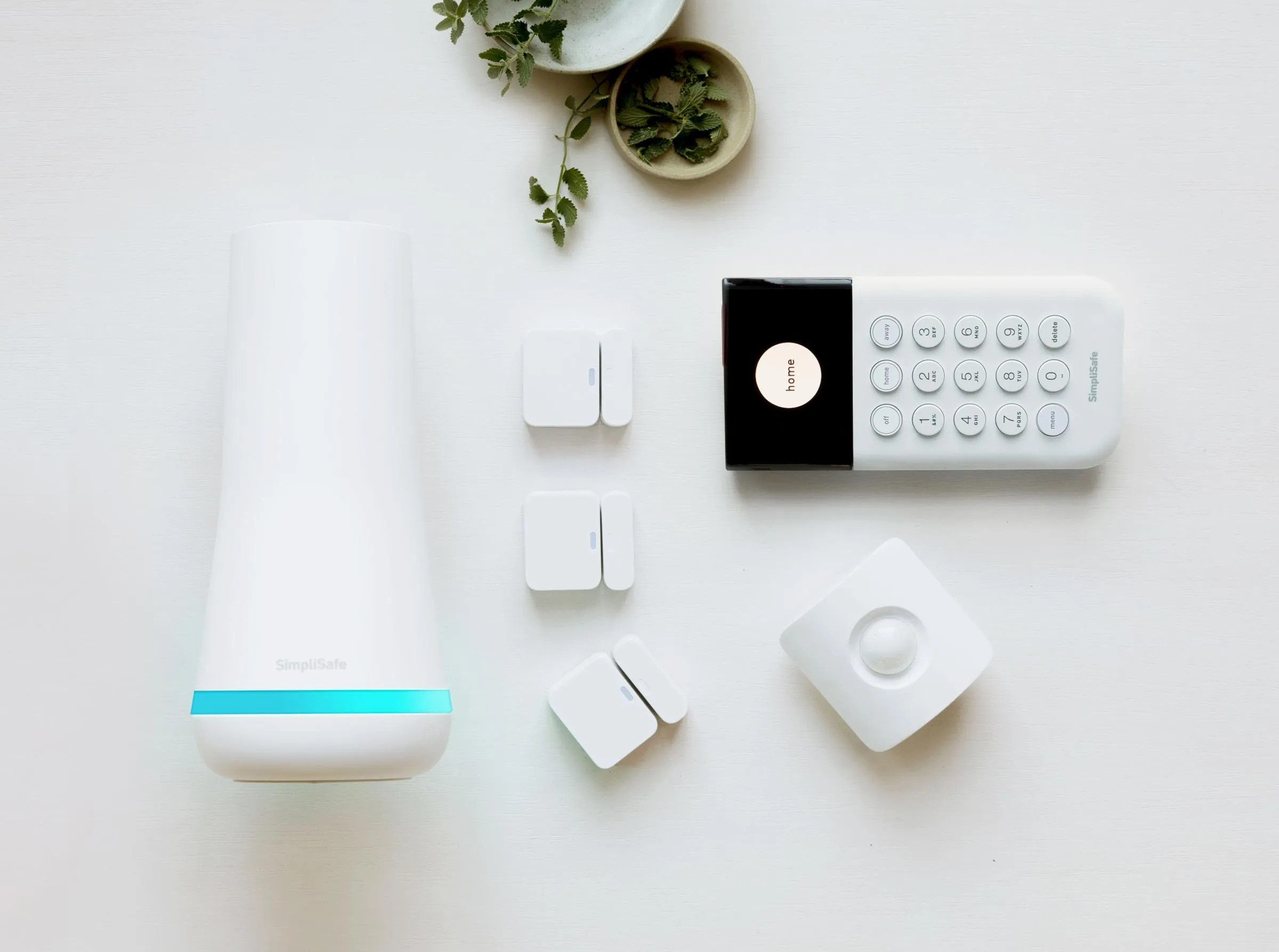Home>Furniture & Design>Interior Design Trends>How To Test Glass Break Sensor


Interior Design Trends
How To Test Glass Break Sensor
Modified: February 18, 2024
Learn how to effectively test a glass break sensor and ensure the security of your home. Stay updated on the latest interior design trends.
(Many of the links in this article redirect to a specific reviewed product. Your purchase of these products through affiliate links helps to generate commission for Storables.com, at no extra cost. Learn more)
Introduction
Glass break sensors are an essential component of a comprehensive home security system. These devices are designed to detect the sound frequency and pattern of breaking glass, providing an added layer of protection against potential intruders. By promptly alerting homeowners and security monitoring services to potential threats, glass break sensors play a crucial role in safeguarding properties and ensuring peace of mind.
In this article, we will delve into the intricacies of glass break sensors, exploring their functionality and the various methods for testing their effectiveness. Understanding the importance of these sensors and how to ensure their proper operation is vital for maintaining a secure and protected living environment. Whether you are a homeowner seeking to optimize your security measures or a professional in the security industry, this guide will equip you with the knowledge to effectively test and validate the functionality of glass break sensors.
As we navigate through the nuances of glass break sensor testing, it's important to recognize the significance of this process in upholding the integrity of a home security system. By comprehensively understanding the mechanisms behind these sensors and the best practices for testing them, individuals can proactively address any potential vulnerabilities in their security setup. With this in mind, let's embark on a journey to unravel the intricacies of glass break sensors and discover the most effective methods for testing their reliability.
Key Takeaways:
- Regularly testing glass break sensors by simulating breaking glass sounds and assessing their range and integration with security systems ensures they work effectively, providing peace of mind and a secure living environment.
- Thorough testing of glass break sensors not only prevents false alarms but also empowers homeowners to identify and address security vulnerabilities, contributing to a heightened sense of security and confidence in their home protection.
Read more: Where To Place Glass Break Sensors
Understanding Glass Break Sensors
Glass break sensors, also known as acoustic glass break detectors, are sophisticated devices designed to detect the unique sound frequencies and patterns associated with breaking glass. These sensors are a pivotal component of home security systems, providing an additional layer of protection against potential intrusions. By promptly identifying the distinct acoustics of shattered glass, these sensors can trigger an alarm, alerting homeowners and security monitoring services to potential threats.
The functionality of glass break sensors revolves around their ability to discern the specific audio signatures produced when glass is shattered. When a window or glass door is broken, it emits a distinct sound profile characterized by high-frequency vibrations and sharp, impulsive noises. Glass break sensors are meticulously calibrated to recognize these acoustic patterns, enabling them to differentiate between the routine sounds of everyday life and the unmistakable resonance of shattered glass.
These sensors typically utilize two primary methods to detect glass breakage: shock wave detection and audio microphone analysis. Shock wave detection involves sensing the vibrations generated by the impact of an object on the glass surface. When a forceful impact occurs, such as that from a blunt object or the initial fracture of the glass, the resulting shock waves are picked up by the sensor, prompting it to activate the alarm system.
In contrast, audio microphone analysis focuses on capturing and analyzing the sound frequencies produced by breaking glass. The sensor's microphone is attuned to recognize the specific acoustic characteristics of shattered glass, such as the sharp, high-pitched tones and rapid bursts of noise. By discerning these distinct audio patterns, the sensor can accurately identify instances of glass breakage and initiate the appropriate response.
It is important to note that modern glass break sensors are equipped with advanced signal processing algorithms that enable them to differentiate between genuine glass breakage and other similar sounds, such as loud noises or impacts. This sophisticated technology enhances the reliability and accuracy of these sensors, minimizing the likelihood of false alarms while maximizing their effectiveness in detecting genuine security threats.
In essence, understanding the intricate workings of glass break sensors empowers homeowners and security professionals to appreciate the precision and sophistication behind these crucial security components. By comprehending the nuanced interplay between sound detection, signal processing, and alarm activation, individuals can gain a deeper insight into the pivotal role that glass break sensors play in fortifying the security infrastructure of residential properties.
Testing Glass Break Sensors
Testing glass break sensors is a fundamental aspect of maintaining a robust home security system. Regularly verifying the functionality of these sensors is essential to ensure their reliability in detecting potential security threats. By conducting thorough and systematic tests, homeowners and security professionals can proactively identify any issues or malfunctions, thereby fortifying the overall security infrastructure.
Manual Testing
One of the primary methods for testing glass break sensors involves manual verification of their responsiveness. This can be achieved by simulating the sound of breaking glass within the sensor's detection range. To do this, individuals can use a glass break simulator or create the sound of breaking glass by clapping hands sharply or using a specialized audio file designed for this purpose. By producing the distinctive sound associated with shattered glass, individuals can assess whether the sensor accurately detects and triggers the alarm in response to the simulated event.
Range and Sensitivity Assessment
Another critical aspect of testing glass break sensors is evaluating their range and sensitivity. This involves determining the effective coverage area of the sensor and assessing its ability to detect glass breakage across different distances and angles. By systematically varying the distance from the sensor and testing it at various points within the monitored area, individuals can ascertain the sensor's responsiveness and coverage capabilities. Additionally, adjusting the sensitivity settings of the sensor, if applicable, allows for fine-tuning its responsiveness to ensure optimal performance.
Read more: How Do Glass Break Sensors Work
Integration Testing
In scenarios where glass break sensors are integrated with broader security systems or smart home platforms, it is imperative to conduct integration testing. This entails verifying the seamless communication and coordination between the glass break sensors and other components of the security ecosystem, such as alarm systems, monitoring devices, and mobile applications. By simulating alarm triggers and assessing the synchronized response of interconnected security elements, individuals can validate the cohesive operation of the entire security setup.
Routine Maintenance Checks
Regular maintenance checks are essential for ensuring the long-term reliability of glass break sensors. This involves inspecting the physical condition of the sensors, including their mounting, wiring, and overall integrity. Additionally, verifying the power supply and battery backup, if applicable, is crucial to prevent potential disruptions in sensor functionality. By incorporating routine maintenance into the testing regimen, individuals can preemptively address any issues that may compromise the sensors' effectiveness.
Comprehensive Testing Protocols
Developing comprehensive testing protocols tailored to the specific characteristics and deployment of glass break sensors is paramount. These protocols should encompass a range of testing scenarios, including variations in sound intensity, frequency, and environmental conditions. By formulating systematic testing procedures that encompass diverse real-world scenarios, individuals can ensure that the sensors are capable of reliably detecting glass breakage under a multitude of circumstances.
In essence, testing glass break sensors is a multifaceted process that demands meticulous attention to detail and a proactive approach to security maintenance. By embracing a comprehensive testing regimen that encompasses manual verification, range assessment, integration testing, routine maintenance checks, and tailored testing protocols, individuals can uphold the operational integrity of glass break sensors, thereby bolstering the overall security posture of their residential properties.
Conclusion
In conclusion, the effective testing of glass break sensors is paramount in upholding the robustness of home security systems. By comprehensively understanding the intricate mechanisms behind these sensors and the various methods for testing their functionality, individuals can proactively safeguard their properties against potential security threats. The significance of glass break sensors in fortifying the security infrastructure of residential properties cannot be overstated. These sophisticated devices, equipped with advanced signal processing algorithms, are designed to discern the distinct sound frequencies and patterns associated with breaking glass, thereby triggering timely alerts in the event of potential intrusions.
The manual testing of glass break sensors, which involves simulating the sound of breaking glass within the sensor's detection range, serves as a foundational method for verifying their responsiveness. Additionally, assessing the range and sensitivity of the sensors, conducting integration testing within broader security systems, and incorporating routine maintenance checks are essential components of a comprehensive testing regimen. By embracing these multifaceted testing protocols, individuals can ensure the operational integrity of glass break sensors, thereby enhancing the overall security posture of their residential properties.
Furthermore, the proactive validation of glass break sensors through systematic testing not only mitigates the risk of false alarms but also instills confidence in the reliability of these crucial security components. It empowers homeowners and security professionals to identify and address any potential vulnerabilities, thereby fortifying the overall security infrastructure. By integrating thorough testing practices into regular security maintenance routines, individuals can uphold the operational effectiveness of glass break sensors, contributing to a heightened sense of security and peace of mind.
As technology continues to advance, the evolution of glass break sensors will likely introduce enhanced features and capabilities, further augmenting their effectiveness in detecting security threats. Embracing these advancements and staying abreast of emerging testing methodologies will be pivotal in ensuring that glass break sensors remain at the forefront of residential security solutions.
In essence, the meticulous testing of glass break sensors is not merely a proactive security measure; it is a testament to the unwavering commitment to safeguarding residential properties and fostering a secure living environment. By prioritizing the comprehensive testing of these sensors, individuals can fortify the protective layers of their home security systems, thereby reinforcing the resilience and reliability of their overall security infrastructure.
Frequently Asked Questions about How To Test Glass Break Sensor
Was this page helpful?
At Storables.com, we guarantee accurate and reliable information. Our content, validated by Expert Board Contributors, is crafted following stringent Editorial Policies. We're committed to providing you with well-researched, expert-backed insights for all your informational needs.















0 thoughts on “How To Test Glass Break Sensor”